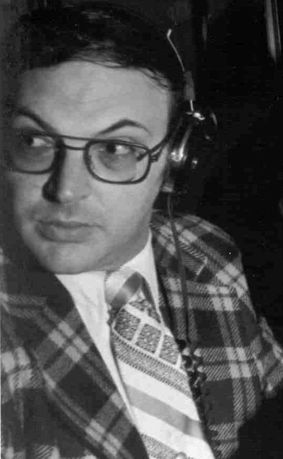and
"A One Night Stand with the Big Bands"
Other Programs
New Features added July 2022
Christmas Eve Programs with Dick Bertel and his Family
Website updated
October 26, 2024
Like us on Facebook

Letters from listeners
|
April 2020 marked the 50th anniversary of The Golden Age of Radio!
We have all 89
"Golden Age of Radio" shows, and 43 "One Night Stand with the Big
Bands." In addition, we have lots of extras, and are adding to them
often. Just click on the links above, turn down the lights, and enjoy
the shows. And check back often for more new features. Re-edited and remastered by Bob Scherago, who is also the webmaster. Your letters! Feel free to email us and we'll publish your comments and photos. |
Visit the WTIC Alumni Site
 "Golden Age of Radio" Hosts Dick Bertel and Ed Corcoran The
Golden Age of Radio was the creation of WTIC personality Dick Bertel
and radio
collector-historian Ed Corcoran, and was first broadcast in April of
1970. For the next seven years the program featured interviews with
radio actors, writers, producers, engineers and musicians from
radio's early days.
In
addition, each show featured excerpts from Ed's collection.
Fortunately, these programs have been preserved, capturing for future
generations the history of this vital medium during its formative years.
Dick Bertel left WTIC in the 1970's and began a second career at The Voice of America in Washington, DC, where he was their Executive Producer. In the early 1990's he spent two years in Munich, Germany, heading up their VOA-Europe bureau. He returned to Washington to create the worldwide English program, "Talk to America," a call-in show heard around the world. He has retired from VOA. and now resides in Maryland. Listen to "The Golden Age of Radio" Ed Corcoran died in 2011. This is a link to his obituary. |
 "One Night Stand"
Host Arnold Dean Arnold
Dean
began his love affair with the big band era in his pre-teen years and
his decision to study the clarinet was inspired by the style of Artie
Shaw. When he joined WTIC in 1965 he hosted a daily program of
big band music. In 1970, encouraged by the success of his daily
program and The Golden Age of Radio series, he began monthly shows
featuring interviews with the band leaders, sidemen, agents, jazz
reporters, etc. who made major contributions to one of the great eras
of music history.
Listen to "A One Night Stand with the Big Bands"He joined WTIC in July 1965, and retired in 2009, his 61st Anniversary in broadcasting. The series concentrated on the 1936-1946 period, the great decade for the big bands. However he also traced the history of jazz through 20's and into the 70's. During those programs Arnold frequently played recordings from his own collection which he describes as "small but selective". Arnold Dean died in 2012. Here's a link to his obiturary. Here is a tribute to Arnold Dean by Dick Bertel. |

Bob was interviewed
recently by John Leslie, who does a podcast about radio. Here's the link.
Webmaster Bob Scherago attended Rutgers University, and graduated in 1960 from the now-defunct RCA Institutes in New York City, earning a certificate in broadcasting and electronics, and a first-class FCC radio telephone license. While at RCA, he worked for CBS Television as an usher in their New York studios. He assisted audiences and sometimes operated the backstage dressing room elevators for such shows as The Ed Sullivan Show, The Garry Moore Show, What's My Line, I've Got a Secret, Masquerade Party, To Tell the Truth, and GE College Bowl. In 1960 he went to work for WGLI-WTFM in Babylon, New York. He started there on the same day that discount appliance retailer Friendly Frost took ownership of the company. Their plan was to move WTFM to New York City. They accomplished this in November, 1961, by installing one of the first directional FM antennas and building a new studio/transmitter/TV and radio showroom in an old Friendly Frost store in Fresh Meadows, NY, just outside of the city. Bob did much of the technical installation of the facility, including construction of a commercial recording studio. The company also constructed and licensed a new FM station in Babylon, WQMF. Shortly after WTFM went on the air at its new loacation, Bob was appointed chief engineer for all three stations. In 1963 he joined the staff of WTIC AM and FM, where he worked at both the studio and transmitter locations until he left in 1977 to work for Connecticut Public Radio, constructing their first radio studios. In April, 1978, he left there to take a position with the Voice of America in Washington. After a 28-year career at VOA in various positions from technician to supervisor to branch chief to design engineer, he retired in 2006. |
Old Time Radio Links (New link added August 1, 2024)
